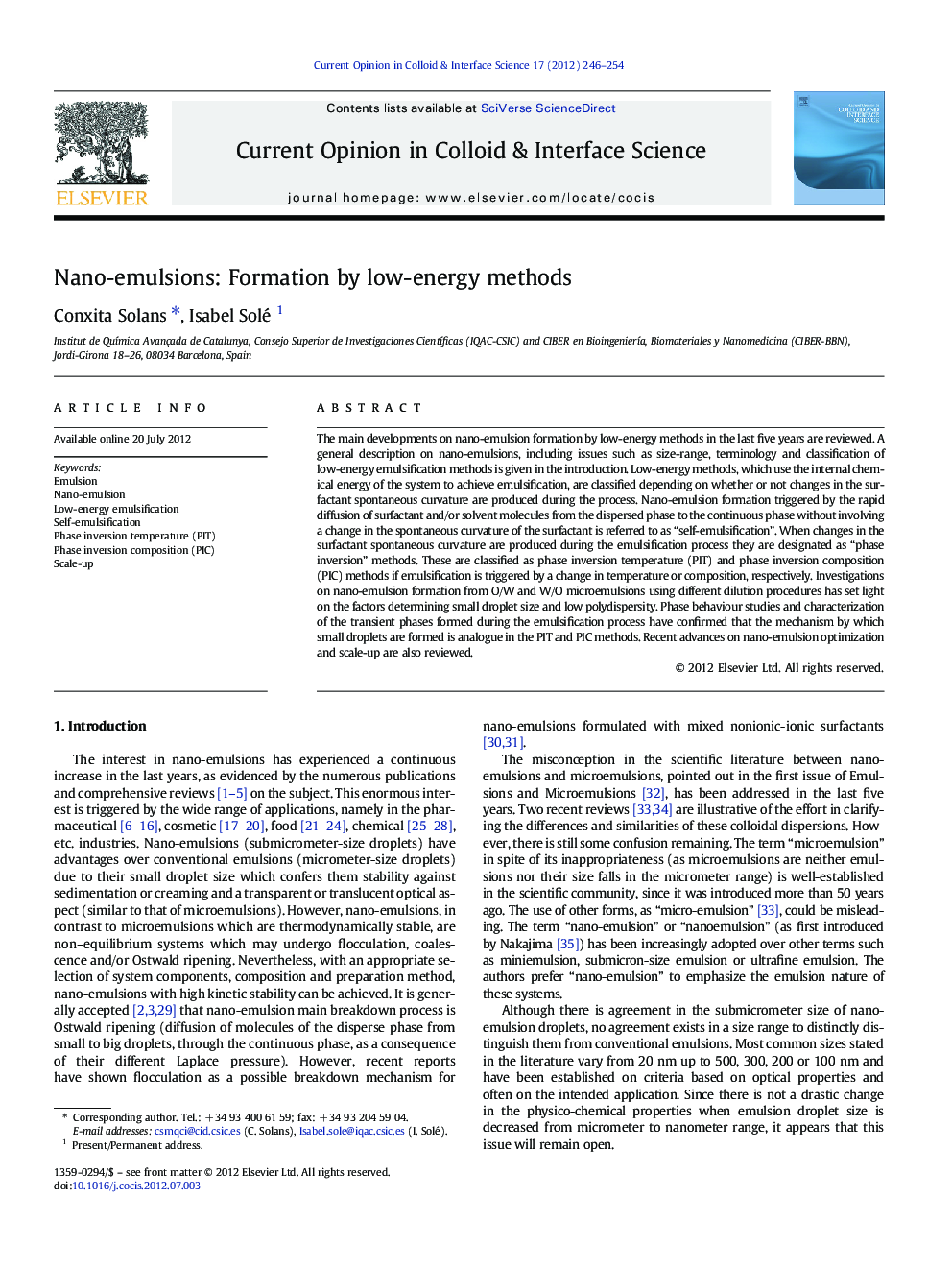| کد مقاله | کد نشریه | سال انتشار | مقاله انگلیسی | نسخه تمام متن |
|---|---|---|---|---|
| 603106 | 880160 | 2012 | 9 صفحه PDF | دانلود رایگان |

The main developments on nano-emulsion formation by low-energy methods in the last five years are reviewed. A general description on nano-emulsions, including issues such as size-range, terminology and classification of low-energy emulsification methods is given in the introduction. Low-energy methods, which use the internal chemical energy of the system to achieve emulsification, are classified depending on whether or not changes in the surfactant spontaneous curvature are produced during the process. Nano-emulsion formation triggered by the rapid diffusion of surfactant and/or solvent molecules from the dispersed phase to the continuous phase without involving a change in the spontaneous curvature of the surfactant is referred to as “self-emulsification”. When changes in the surfactant spontaneous curvature are produced during the emulsification process they are designated as “phase inversion” methods. These are classified as phase inversion temperature (PIT) and phase inversion composition (PIC) methods if emulsification is triggered by a change in temperature or composition, respectively. Investigations on nano-emulsion formation from O/W and W/O microemulsions using different dilution procedures has set light on the factors determining small droplet size and low polydispersity. Phase behaviour studies and characterization of the transient phases formed during the emulsification process have confirmed that the mechanism by which small droplets are formed is analogue in the PIT and PIC methods. Recent advances on nano-emulsion optimization and scale-up are also reviewed.
Figure optionsDownload high-quality image (83 K)Download as PowerPoint slideHighlights
► Nano-emulsion formation by low-energy methods is reviewed.
► No changes in surfactant spontaneous curvature is involved in self-emulsification.
► Formation of low-polydisperse nano-emulsions can be achieved with either PIT or PIC.
► Nano-emulsion tunability and scale-up studies are necessary for industrial applications.
Journal: Current Opinion in Colloid & Interface Science - Volume 17, Issue 5, October 2012, Pages 246–254